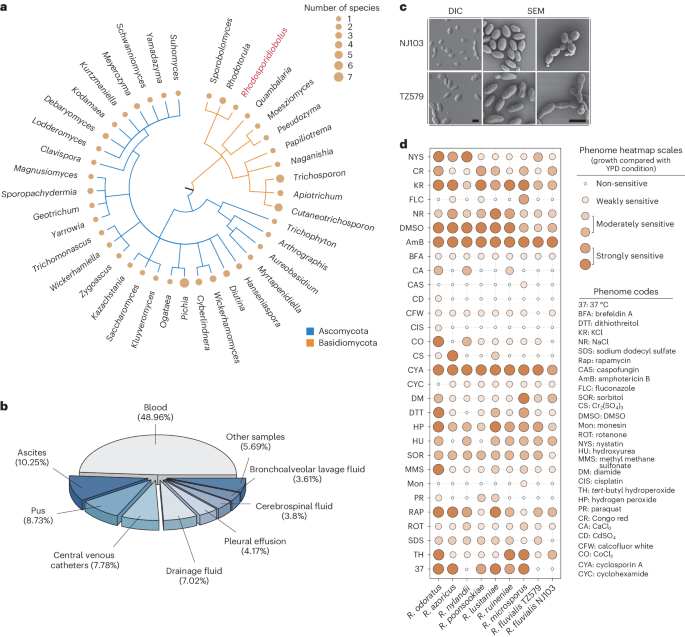Abstract
The continuing emergence of invasive fungal pathogens poses an increasing threat to public health. Here, through the China Hospital Invasive Fungal Surveillance Net programme, we identified two independent cases of human infection with a previously undescribed invasive fungal pathogen, Rhodosporidiobolus fluvialis, from a genus in which many species are highly resistant to fluconazole and caspofungin. We demonstrate that R. fluvialis can undergo yeast-to-pseudohyphal transition and that pseudohyphal growth enhances its virulence, revealed by the development of a mouse model. Furthermore, we show that mouse infection or mammalian body temperature induces its mutagenesis, allowing the emergence of hypervirulent mutants favouring pseudohyphal growth. Temperature-induced mutagenesis can also elicit the development of pan-resistance to three of the most commonly used first-line antifungals (fluconazole, caspofungin and amphotericin B) in different Rhodosporidiobolus species. Furthermore, polymyxin B was found to exhibit potent activity against the pan-resistant Rhodosporidiobolus mutants. Collectively, by identifying and characterizing a fungal pathogen in the drug-resistant genus Rhodosporidiobolus, we provide evidence that temperature-dependent mutagenesis can enable the development of pan-drug resistance and hypervirulence in fungi, and support the idea that global warming can promote the evolution of new fungal pathogens.
So the Last of Us guy wasn’t bullshitting. Delightful.



